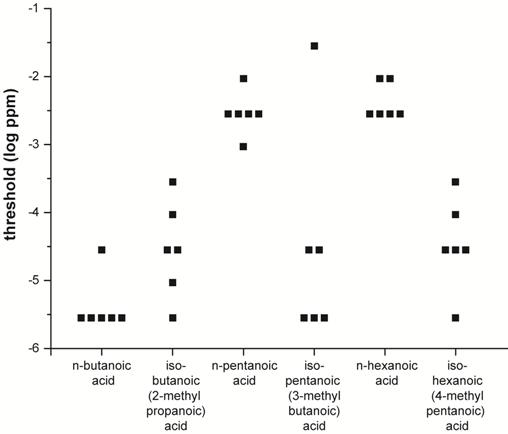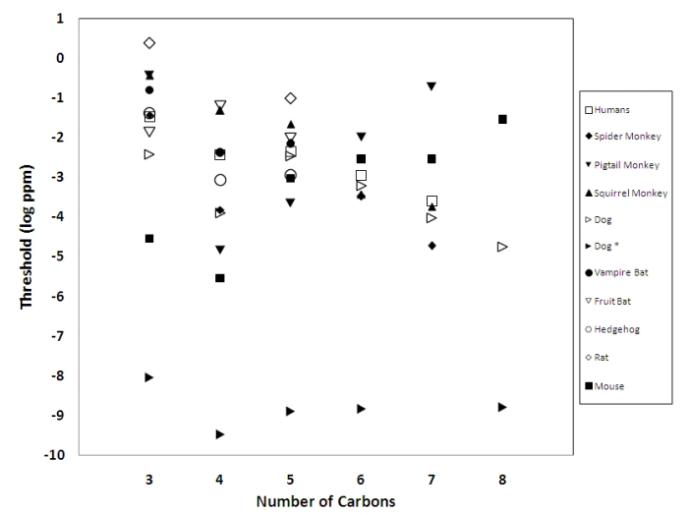Results

Among the 11 odorants tested, the overall threshold range was four orders of magnitude, varying from -1.5 log ppm to -5.5 log ppm. For n-carboxylic acids, there was an overlap between the threshold ranges of n-pentanoic acid, n-hexanoic acid and n-heptanoic acid; as well as between n-propanoic acid and n-butanoic acid, respectively.
It should be noted, however, that five out of six mice displayed their lowest threshold values with n-butanoic acid. N-octanoic acid yielded the highest olfactory detection thresholds which did not overlap with any of the other n-carboxylic acids.
Comparison of different unbranched carboxylic acids

Comparison of iso- vs n- forms of carboxylic acids

Comparison of different Species

Responsible for this page:
Director of undergraduate studies Biology
Last updated:
05/21/11
